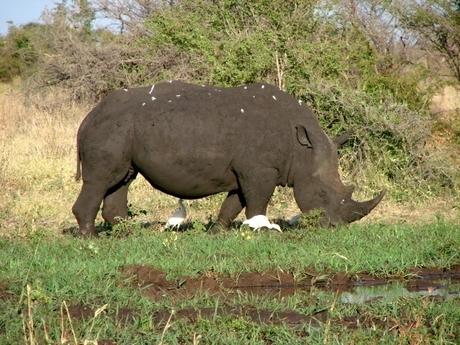How do you ensure an endangered species goes back – and stays on – the safe list? A renewed threat has come to one of Africa’s Big Five – the black rhino in Kenya. An increased interest is stemming from the market in Asia, leading to higher numbers of poachers.
This is because the horn of these prehistoric-looking creatures is considered – yet unproven – to aid medical issues.
We’ve highlighted before how tourism can aid the conservation of our endangered wildlife.
Providing the opportunity for interested guests to go on safari in Africa and learn about the “Big Five” is not only an integral source of income to this developing continent, but it also raises awareness of the issues in safeguarding rhinos and other endangered species, including the African elephant.
Did you know? The Big Five consists of the African elephant, lion, leopard, rhino and buffalo.
Estimates of the numbers of black rhino today vary, although there were just 635 black rhinos by the end of 2009. Black rhino conservation has been undertaken since the 1970s when the first decline occurred.
The Duke of Cambridge, Prince William, the royal patron of Tusk Trust, said in June 2012:
Are our grandchildren ever going to be able to see the big five? I think that’s terribly sad and that should never happen.
See for yourself the vital work being undertaken by a few privately owned wildlife conservancy within Laikipia in Central Kenya, which boasts savannah grasslands and riverine forests when on a safari in Africa.
Located in the Rift Valley Province of Kenya and named after a great Masai chief, Solio Ranch (also known as Solio Game Reserve) is a 17,500 acre reserve that protects and breeds black rhinos in amongst their natural habitat.
Started in 1970, it was the world’s first private rhino sanctuary. We recommend that you stay at the Sandai Homestay, which neighbours the reserve, or the high end Solio Lodge.

Lewa is a private, high security sanctuary, set up in the early 1980s by passionate private landowners, conservationists and philanthropists.
A 5,000 acre plot on these serene savannah plains was where the first tracking, capturing and relocating of the wild rhino occurred, however its success quickly led to the recruitment of game-trackers, bush pilots, veterinarians.
Today the plot has expanded to some 62,000 acres and it was in the rustic Rutundo Log Cabins on the slopes of Mt Kenya nearby where Prince William proposed to Kate Middleton on their trip to Kenya!
The focus of Lewa remains on anti-poaching and security. Over 10% of Kenya’s black rhino population lives here, as does the largest population of the endangered Grevy’s zebra.
Local communities can now radio into the conservancy’s radio room at any sign of trouble.
Lewa also was a founding member of the Ol Pejeta Conservancy, a nearby 90,000-acre reserve that protects the largest single population of black rhinos in Kenya and East Africa, of which there are currently 88.
Ol Pejeta works with the Kenya Wildlife Service (KWS), which has developed a National Black Rhino Management Strategy and its main focus is to expand the territory so that the black rhino population has the freedom to grow.
In Ol Pejeta you can stay at the small yet luxury Kicheche Laikipia Camp or in Porini Rhino.
We invite guests to travel to Africa and visit the Lakipia plains and these community-owned conservancies where you can embrace some of the most diverse safari experiences on the continent – from game drives and bush walks to horse riding and even camel trekking safaris.
With the backdrop of Mount Kenya and the beauty of the flora, this is a destination where you can truly contribute back to the wild.
plan your tripDesign your safari in Lakipia today
